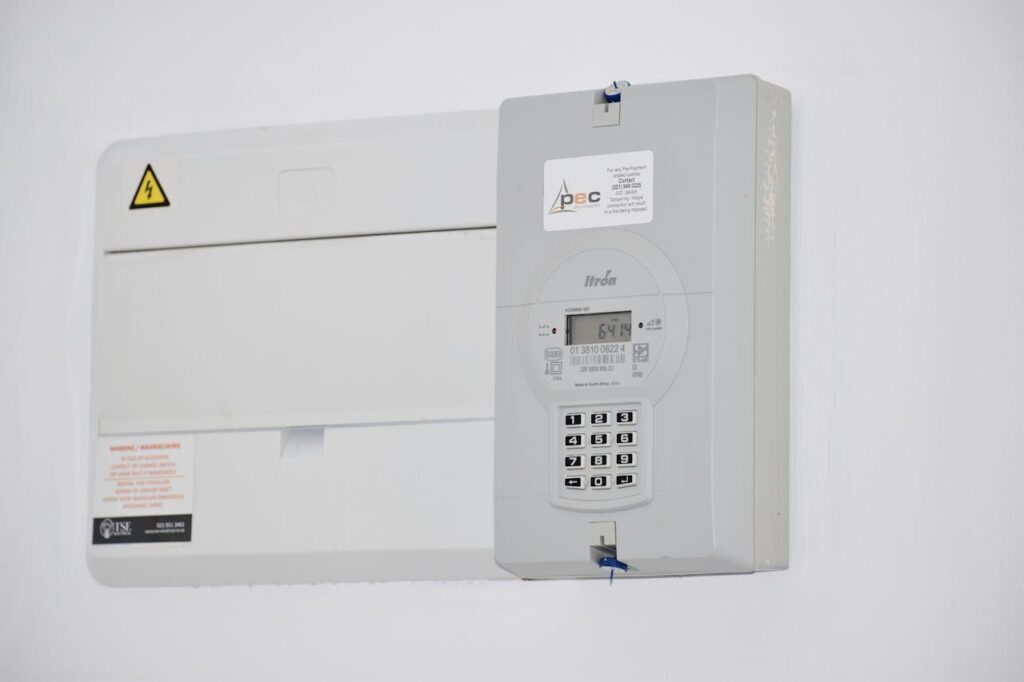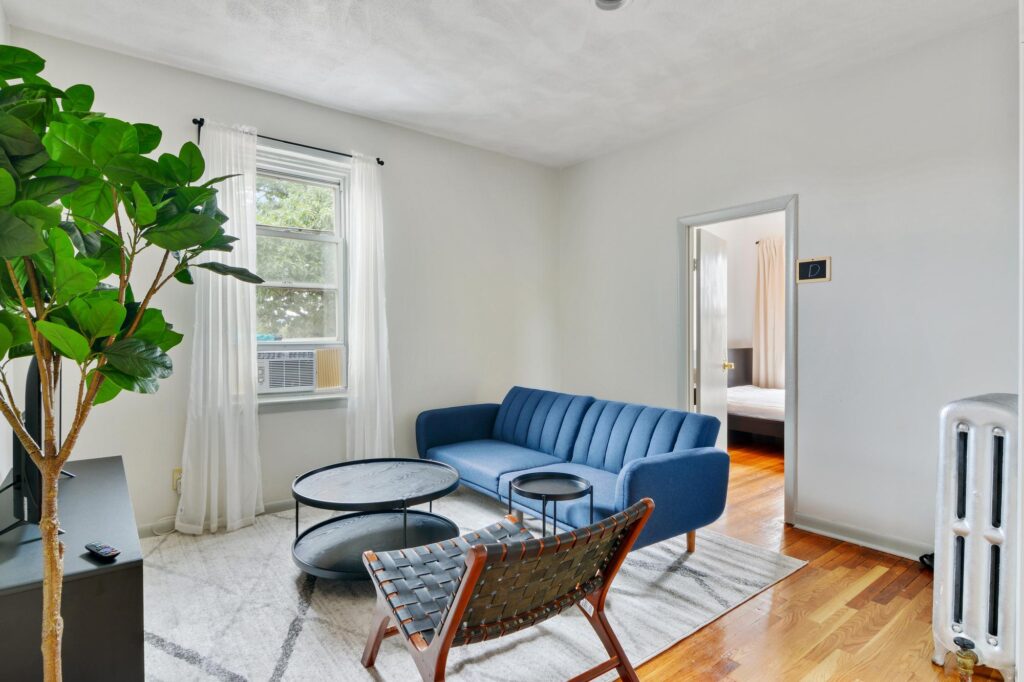Estimated reading time: 8 minutes

Utilities are essential services that keep your apartment comfortable and functioning. These include electricity, water, gas, internet, and waste management.
When renting, find out what utilities are included in your rent and which you’ll need to pay separately. This helps you budget accurately, avoid unexpected expenses, and plan for seasonal fluctuations in utility costs.
If not, you might have budget errors, service cuts due to unpaid bills, lease violations, and potential fines for delayed payments.
What do utilities include? Standard utilities vary with apartments, so always clarify with your landlord what’s covered.
This guide will help you understand what utilities are and what to expect.
What Are Utilities?
We often get this from first-time renters: What are utilities in an apartment?
Simply put, utilities are the basic services that you need in your apartment to make your space habitable and comfortable. They transform your living space into a functional home, allowing you to live comfortably and efficiently.
Common Utilities in Apartments
The most common utilities are electricity, water, gas, sewage, and trash collection. Some apartments also consider internet, cable TV, or heating as utilities.
- Electricity: Provides energy for lighting, cooling and heating systems, kitchen appliances, entertainment devices, and personal electronics.
- Water and Sewer: Supply fresh water to bathrooms, showers, and toilets, as well as for drinking, cooking, and cleaning. The sewer utility manages the disposal of used water for treatment.
- Gas: Used for cooking in gas stoves and ovens in the kitchen. Some apartments use gas for heating, fueling furnaces or boilers during colder months, and hot showers.
- Trash and Recycling: Involve regular collection and proper disposal of household waste, as well as collection of recyclable materials like paper, plastic, and glass.
- Internet/Cable: Usually optional but often included, internet connection enables work-from-home setups, online entertainment, and staying connected with friends and family. Cable TV offers channels for news, sports, and entertainment.
Some utilities may be included in the rent, while others might be your responsibility and vary from apartment to apartment. Understanding what utilities are included in rent is important as it affects your comfort and rent budgeting.
What Utilities Are Included in Rent?
When looking for a new place to rent, you’ll often see the term “utilities included” in apartment listings. While this can be attractive as a renter, find out what utilities are included in rent before signing a lease.
Utilities that are ommonly included are;
- Water
- Sewer
- Trash collection
- Sometimes heat
The specific utilities included vary depending on the apartment, landlord, or property management company due to:
- Building infrastructure: Older buildings may include heat because of centralized heating systems, while newer ones might have individual units
- Local regulations: Some areas require landlords to provide certain utilities by law. For instance, landlords in California are required to provide a habitable living space.
- Property management strategy: Some landlords include utilities to simplify billing and attract tenants, while others prefer tenants to manage their own usage.
- Cost considerations: High-usage utilities like electricity are often left for tenants.
- Market competition: In highly competitive rental markets, including utilities can make a property more attractive to potential tenants.
Enjoy a hassle-free, high-end rental experience for stays of one month or longer in major US cities.

Fully-furnished rooms and apartments with flexible lease. Apply today and move in tomorrow.
Scenario for Included Utilities
A small apartment complex in a college town with a single meter for all units, a communal dumpster, and a central heating system can include water, trash, and heating costs in the rent.
For internet and cable TV, students usually have varying needs for these services, so the landlord lets them choose their own plans.
Scenario for Excluded Utilities
On the other hand, a modern apartment building in an urban area may have no utilities included.
The building has individual meters for each unit, allowing individual metering and precise tracking of usage. Besides, tenants have diverse lifestyles and consumption patterns, so individual billing is fairer.
What Should Renters Know About Utilities Before Signing a Lease?
Before renting an apartment, ask which utilities are included in the rent. Verify whether the landlord covers essential utilities like water, trash, and heat, and clarify if you’ll be responsible for services like electricity, gas, and internet.
Make sure to get a clear understanding of typical utility costs in the area so you can budget accordingly. If utilities are included, ask if there’s a usage cap beyond which you’d be charged extra. Always get these details in writing to avoid misunderstandings
What If You’re Renting a Room (Subletting)?
When subletting, utilities are split among the tenants or included in your rent. Ensure to clarify which utilities are covered in the sublet agreement.
As a subletter, you have an agreement with the primary tenant (sublessor), not the property owner. The primary tenant usually handles utility accounts, and you contribute your share.
As such, common utilities may be split among roommates, while the primary tenant or landlord might cover others. Ensure to clarify how utility bills will be split among roommates. You can agree to split the utility bills in different ways, such as;
- Equal Split: All tenants pay an equal share of the total utility bills.
- Usage-Based: Costs are divided based on individual usage or room size.
- Flat Rate: You might pay a set amount for utilities as part of your rent
Knowing what utilities are included in rent helps you calculate your true monthly living expenses and prevents conflicts.
Utility Costs and Charges
What Are Utility Expenses?
Utility expenses are costs you incur on utilities in your apartment, usually billed monthly.
The actual utility costs and charges depend on the type/size of the apartment, location, and individual usage. Larger apartments generally consume more electricity due to additional lighting and appliances.
Also, more square footage means more space to heat, more occupants, thus higher water usage.
| Utility | Studio/1 Bedroom | 2 Bedrooms | 3+ Bedrooms |
| Electricity | $65 – $90 | $80 – $110 | $100 – $140 |
| Gas | $40 – $60 | $50 – $70 | $60 – $80 |
| Water | $25 – $40 | $35 – $50 | $45 – $65 |
| Internet | $45 – $60 | $45 – $60 | $45 – $60 |
| Trash/Recycling | $20 – $80 | $20 – $80 | $25 – $35 |
| Cable | $40 – $145 | $40 – $145 | $40 – $145 |
In terms of location, urban areas often have higher utility rates due to high demand and infrastructure costs. Also, states have differences in energy sources, infrastructure, and regulations.
For example, the average electricity cost in New York City is $28.8 cents/kWh compared to $12.28 cents/kWh in rural Idaho.
Energy consumption and efficiency can reduce utility costs by 20-30% compared to less efficient units.
Which Utilities Are Most Expensive?
When budgeting, understand which utilities are most expensive to manage consumption.
Generally, electricity and heating are the biggest utility expenses. These can fluctuate based on seasons, regions, and usage patterns.
For instance, in hot climates like Arizona, AC costs can reach $200-$300 per month in summer for a 2-bedroom apartment. In Minnesota, heating costs can hit $200-$250 per month in winter for a 2-bedroom apartment due to cold climates.
Final Thoughts
Understanding what are utilities in a house and budgeting for them helps to accurately assess the true cost of living in an apartment. Utility bills can increase your monthly living expenses, even by several hundred dollars. Before signing a lease, ask which utilities are included in the rent and which you’ll be responsible for.
And if you’re looking to rent an apartment, June Homes offers a hassle-free rental experience in major US cities. Our fully-furnished rooms and apartments have a flexible lease, monthly or short-term, from as little as 1 month.
Find a home, take a tour, and sign the lease in as little as 3 hours.




